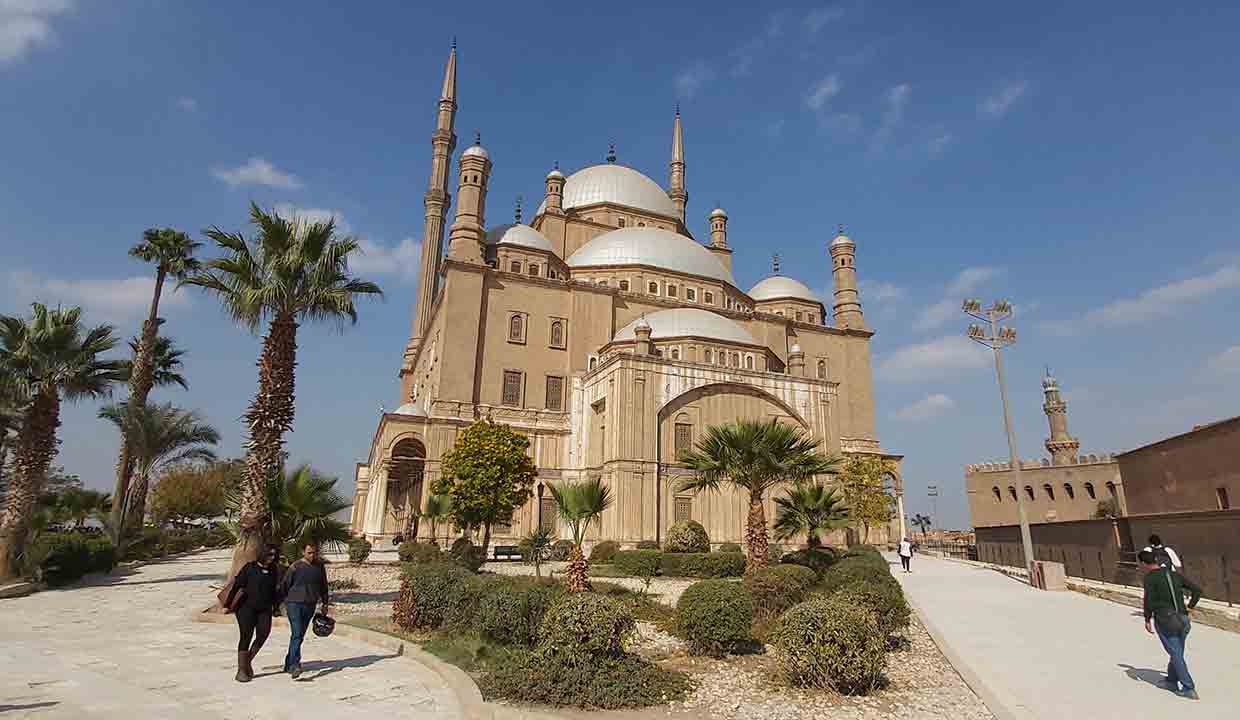Where alabaster walls meet history: the Alabaster Mosque is Cairo’s tribute to faith, ambition, and the legacy of Muhammad Ali Pasha.
Cairo, often referred to as the ‘City of a Thousand Minarets,’ is home to countless historical and architectural gems. Amidst this treasure trove, the Great Mosque of Muhammad Ali Pasha, commonly known as the Alabaster Mosque, stands out as a beacon of 19th-century Islamic architecture, rivalling the great mosques of the Ottoman Empire.
Historical Context
Perched within the historic Citadel of Cairo, the Alabaster Mosque was commissioned by Muhammad Ali Pasha, the Ottoman governor and de facto ruler of Egypt from 1805 to 1848. His reign, though controversial, left an indelible mark on modern Egyptian history. Aiming to establish a dynasty and make a break from the past, Muhammad Ali Pasha decided to construct a mosque that would rival the Sultan Ahmed Mosque in Istanbul. It was to be not only a place of worship but also a statement of power and ambition.
Architectural Brilliance
The mosque was designed by the Greek architect Yousif Bushnaq in the Ottoman style, a clear homage to its Istanbul counterparts. Its domes, semi-domes, and towering minarets are emblematic of this style, lending it a sense of grandeur and verticality.
What makes the Alabaster Mosque particularly unique is its extensive use of alabaster on the facades and interior walls. This use of alabaster, a fine-grained, translucent form of gypsum, gives the mosque a luminous quality. As sunlight filters through the mosque’s windows, it plays off the alabaster, bathing the interior in a soft, ethereal glow.
Interior Splendor
The mosque’s interior is a magnificent display of artistic craftsmanship. The central dome, supported by four massive arches, rises to a staggering height, creating a sense of divine vastness. The intricate patterns of gold and colorful motifs contrast beautifully with the alabaster’s milky whiteness. The mosque’s cavernous prayer hall boasts a grand chandelier, said to be a gift from the French King Louis-Philippe.
At the western end of the mosque, a clock tower stands as a curious addition. It was a gift from the French, exchanged for the obelisk that now stands in Place de la Concorde in Paris.
Modern-day Significance
Today, the Alabaster Mosque is not only a functioning place of worship but also one of Cairo’s premier tourist destinations. Visitors from all over the world flock to admire its architectural grandeur and to bask in the serenity that its sacred spaces offer.
Conclusion
The Alabaster Mosque of Muhammad Ali serves as a reminder of a transformative era in Egyptian history. More than just a mosque, it is a testament to human ambition and the timeless allure of art and architecture. In a city teeming with historical landmarks, the Alabaster Mosque shines brilliantly, a lasting legacy of Muhammad Ali Pasha’s vision.
